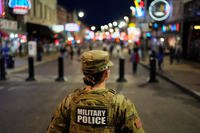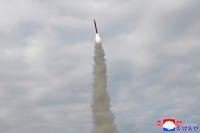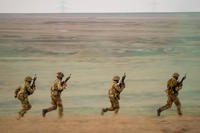During the French-Indochina war, hard-pressed French troops, outnumbered by the Viet Minh, relied heavily on Morane spotter planes to lead them out of ambushes, find escape routes from remote mountain valleys or call in artillery or close air support. The single engine Morane 500 ‘Criquet’, a modification of the venerable German-built Fieseler Storch, loaded with two men and three radios, provided vital “over the shoulder” support to French ground troops.
In Afghanistan, that role largely is filled by a growing fleet of Predator and MQ-9 Reaper aerial drones. They provide much needed over-watch as U.S. troops spread out in smaller units and to ever more remote areas to provide population security and pursue elusive Taliban guerrillas who find refuge in high mountain valleys, said Air Force Brig. Gen. Guy Walsh, commander of the 451st Air Expeditionary Wing at Kandahar Air Field, in a conference call with reporters.
The number of drones operating in Afghanistan’s skies has nearly doubled over the past year. The drone's electronic eyes provide patrolling troops the ability to see over the next hill to see what insurgents might be doing, Walsh said, and act as an important force multiplier. He commands one of the largest air wings in the U.S. Air Force, with some 1,350 airmen at Kandahar. Walsh’s air wing operates about a dozen A-10Cs and some 50 aerial drones at Kandahar, along with C-130s and medevac aircraft and helicopters. The aerial drone “Launch and Recovery Element” perform the actual take-off and landing of all the drones (as well as maintenance and weapons load out), after hand-off from pilots based at Creech Air Force Base, Nevada.
Kandahar air field is the busiest runway in the world, he said, with some 700 take offs and landings every day. Limited ramp space is becoming a “huge challenge,” with around 270 aircraft based there. “There is no more room on the ramp to move more A-10s in here.” More attack jets maybe not, but he said over the next 6 to 12 months more drones will be arriving at Kandahar.
I asked Walsh about the allegation that troops on the ground in Afghanistan are not getting the close air support they need, an issue we’ve been covering in depth in recent weeks. “I will never tell you that we have enough air assets in the country to be able to provide close air support to every type organization,” Walsh said. Still, the average time of getting A-10s overhead to a troops in contact situation is ten to eleven minutes, he said, well under the 15 minute rule.
The decision whether or not to drop a bomb or not does not go up the chain to commanders sitting in Kabul, Walsh said. The air wing operates under the “tactical directive,” pertaining to close air support or troops in contact; when a report comes in from ground troops, it’s forwarded immediately to aircraft in the skies over Afghanistan. The decision as to whether to drop a bomb or not is a tactical level operation and does not require any strategic level approval, Walsh said.
In addition to the A-10Cs that were recently added at Kandahar, there are more F-15Es and F-16s flying over Afghanistan, Walsh said. “I’m not sure there is an immediate need right now for additional CAS assets, I think we’ve got it about right from the ramp space we have.”
Something to consider: if Predator and Reaper drones are able to provide that persistent, and sometimes armed, overwatch to ground units, what value added would come from a small and light "counterinsurgency" aircraft along the lines of the Vietnam era Bronco that some are advocating?








